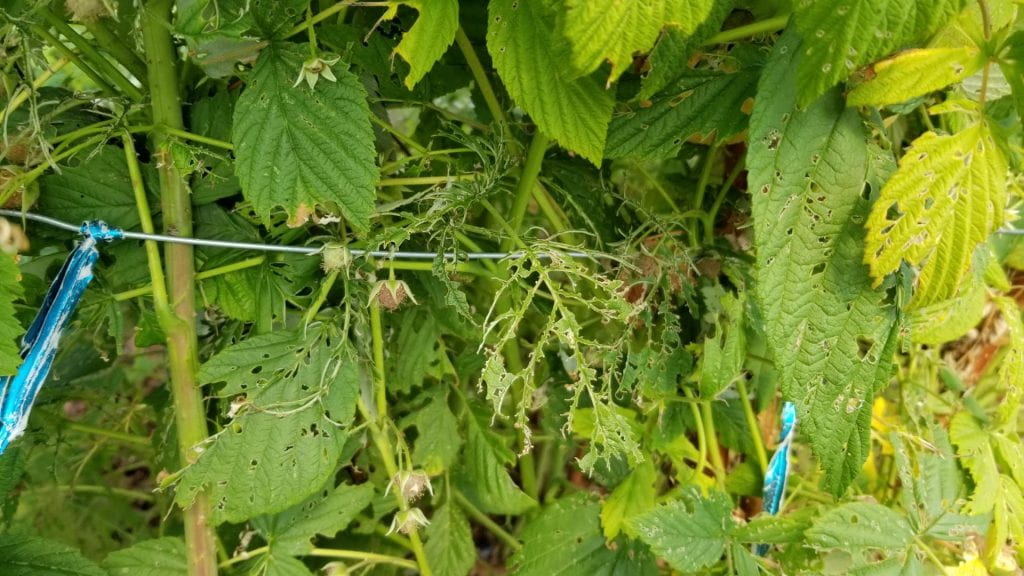Raspberry fruitworm (Byturus unicolor) prefers red and purple raspberries. Fruitworm adults limit their feeding to between the veins, skeletonizing unfolding leaves.

Adults also feed on buds, and open flowers but the damage is usually minimal. Eggs are deposited on swollen unopened flower buds, inside buds or on developing fruit.

Larva hatch and bore into the receptacle tissue. When harvest fruit is picked larva often remain attached to the cup-like interior of the fruit and become a contaminant to harvested berries.

More information:
- Raspberry Fruitworm – (OMAFRA)
- The Raspberry Fruitworm – (Connecticut Agricultural Experiment Station)
Use these resources if you need additional help with diagnosis and to find solutions to your problem.


